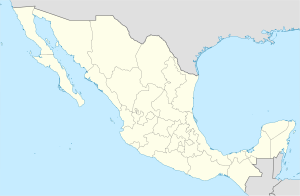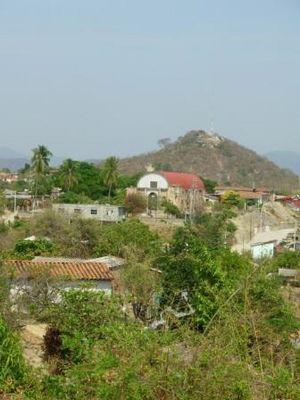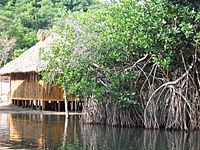Villa de Tututepec de Melchor Ocampo facts for kids
Quick facts for kids
Villa de Tututepec de Melchor Ocampo
|
|
|---|---|
|
Municipality and town
|
|
| Country | |
| State | Oaxaca |
| Area | |
| • Total | 1,249 km2 (482 sq mi) |
| Elevation | 280 m (920 ft) |
| Population
(2005)
|
|
| • Total | 40,767 |
| Time zone | UTC-6 (Central Standard Time) |
| • Summer (DST) | UTC-5 (Central Daylight Time) |
Villa de Tututepec de Melchor Ocampo is a town and municipality located in the state of Oaxaca, in south-western Mexico. It is a place with a rich history and beautiful nature.
Contents
History of Tututepec
Ancient Kingdom and Bird Mountain
Long ago, in 357 AD, a small kingdom of the Mixtec people was founded here. A prince named Mazatzin came from a place called Tilantongo. He climbed a mountain filled with seabirds and decided it was the perfect spot for his capital city. He named it “Yucu – Saa,” which means "Bird Mountain" in the Mixtec language.
Standing Strong Against the Aztecs
The city of Tututepec became an important Mixtec capital. A famous leader named Eight Deer Jaguar Claw ruled here. Tututepec managed to stay independent, even when the powerful Aztecs attacked between 1483 and 1519.
Arrival of the Spanish
On March 3, 1522, a Spanish explorer named Pedro de Alvarado arrived. He fought against Tututepec's warriors, who were led by Cuaxintecutli, also known as "Venerable Lord Serpent." After the battle, the Spanish took control. In April 1522, another Spanish leader, Hernán Cortés, moved a settlement called Villa de la Segura de la Frontera to Tututepec. Gutierre de Badajoz became the first mayor of the new Spanish town.
Geography and Nature
Location and Meaning
Tututepec is located in the Costa Region of Oaxaca, right on the Pacific coast of Mexico. The name "Tututepec" itself means "Bird Mountain," just like its ancient Mixtec name.
Size and Special Places
The municipality covers a large area of about 1,249 square kilometers (482 square miles). It sits at an average height of 280 meters (919 feet) above sea level. This area is home to the amazing Lagunas de Chacahua National Park, which has beautiful lagoons. There's also an old archaeological site called Villa Segura Tututepec, where you can learn about the past.
Climate
The weather in Tututepec is generally hot and humid, perfect for the plants and animals that live there.
Plants and Animals
The region is full of diverse life.
- Plants: You can find palm trees, cotton, coffee, and many fruits like citrus, melons, bananas, and lemons. Hibiscus flowers also grow here.
- Animals: The area is home to iguanas, deer, and various types of snakes. The lakes are full of fish.
People and Daily Life
Population and Languages
In 2005, about 40,767 people lived in the municipality of Tututepec. Many families live here, and some people still speak an ancient language called Tututepec Mixtec.
What People Do
Most people in Tututepec work in farming. About 90% of the population grows fruits like watermelon, cantaloupe, papaya, hibiscus, and bananas. Many also raise animals on a small scale. Some people are skilled artisans, making beautiful pots, jars, beads, and blouses by hand.
Culture and Traditions
Special Drinks and Celebrations
One important part of Mixtec culture in Tututepec is a traditional chocolate-based drink called Champurrado. It's a symbol of their heritage. People often celebrate important events with a blessing of food, giving thanks to Mother Earth, and a traditional Mass.
Local Fairs and Arts
When there are special events, like the 1656th anniversary of the municipality, people gather for celebrations. There might be a parade of bicyclists and special guests. They also have exhibitions where local artists show their handmade crafts and delicious local foods. Sometimes, there's even a book fair!
Gallery
See also
 In Spanish: Villa de Tututepec de Melchor Ocampo para niños
In Spanish: Villa de Tututepec de Melchor Ocampo para niños






